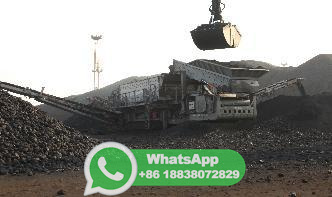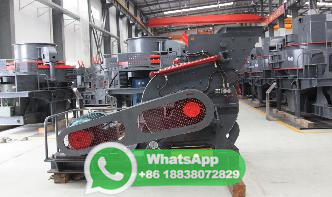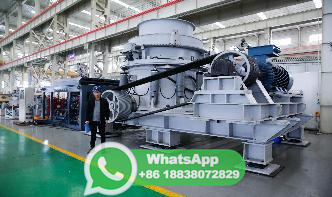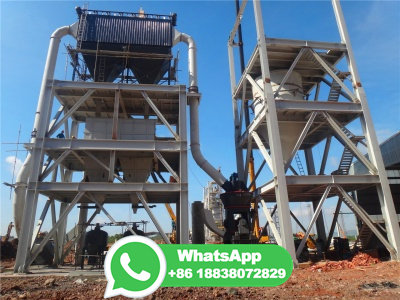
An energy based comparison of vertical roller mills and tumbling mills. Int. J. Miner. Process. (2015) Bracey et al. ... Failure analysis of a pull rod actuator of an ATOX raw mill used in the cement production process. Engineering Failure Analysis, Volume 76, 2017, pp. 99114.
WhatsApp: +86 18838072829
Furthermore, cement kiln dust may be emitted to control the chemical composition of the clinker. Clinker production is the most energyintensive stage in cement production, accounting for more than 90% of total industry energy use and virtually all the fuel use. The main kiln type used throughout the world is the largecapacity rotary kiln.
WhatsApp: +86 18838072829
2 •, the production of clinker (in tonnes per year) from each kiln by kiln type; •, the amount of raw materials, coal and clinker that is ground by mill type (in tonnes per year); •, the amount of production of cement by type and grade (in tonnes per year); •, the electricity generated onsite; and, •, the energy used by fuel type; and, the amount (in RMB per year) spent on energy.
WhatsApp: +86 18838072829
In general, a full cement production process includes the stone crushing, raw mill process, clinker process, and cement grinding process, cement packing process, and related process. The Portland cement manufacturing process is representative of all types of cement. limestone and clay are the main raw materials of cement making, the cement raw ...
WhatsApp: +86 18838072829
Operating Status of Raw Material Mill System in China Cement Industry In cement production, the energy consumption of the grinding process is mainly reflected in the links of raw material preparation, coal powder preparation, and cement ... The unit production capacity of the vertical mill and roller press can be as high as 640 t/h, which can ...
WhatsApp: +86 18838072829
World cement production has grown steadily in the last decades and represents an energyintensive industry, which accounts for ~ Gt of CO 2 emissions per year, corresponding to roughly 67% of global anthropogenic GHG emissions ( Zhu, 2011 ).
WhatsApp: +86 18838072829
Cement Sector Bureau of Energy Efficiency. Grouping of Cement plants 7 Energy Consumption Range 8 Example: Normalised Baseline parameters and Target for PPC 8 Apportionment of SubSector Target of Energy Saving in Cement Sector 9 Apportionment of Target of Energy Saving in individual Cement plant 9 6.
WhatsApp: +86 18838072829
Modeling and simulation of vertical roller mill using population balance model Rasoul Fatahi, Kianoush Barani ... The electrical energy consumed in the cement production process is approximately 110kWh/ton, about 30% of which is used for the ... used in the coal and cement industry today (Reichert et al., 2015). However, a disadvantage of VRMs
WhatsApp: +86 18838072829
Planning, organisation and realisation of plant examinations. Introduction into calculation of energy and mass balances. Introduction into measuring techniques. Case studies: Calculate an energy balance of a cyclone preheater plant, mass balance of a cyclone preheater plant. Efficient mill operation (ball mill; roller press; VRM)
WhatsApp: +86 18838072829
Abstract and Figures. Grinding mills are infamous for their extremely low energy efficiency. It is generally accepted that the energy required to produce new mineral surfaces is less than 1% of ...
WhatsApp: +86 18838072829
The production and clinker capacity of countries in 2015 and 2016 are summarized in Table 1 [9]. China is the leader on both cement production and clinker production, accounting for more than 50% of total production. Top two countries, China and India, make up about twothirds of total cement production in the world.
WhatsApp: +86 18838072829
Ball Mill Heat Balance Explanation. The Cement Grinding Office. Home. About Us. Services. Mining Area.
WhatsApp: +86 18838072829
The cement industry sector is an energyintensive industrial sector; cement is the most widely used material for construction and modern infrastructure needs. ... From the depository the raw materials are transferred to the vertical roller mill with a capacity of 170 t/h and appropriate raw meal is produced. The storage of current raw meal has ...
WhatsApp: +86 18838072829
The cement (clinkering) benchmark curve shows that updating 10% of most energy intensive cement plants can moderate the worldwide clinkering benchmark curve with a maximum energy use index of (equivalent to GJ/t Clinker). Hasanbeigi et al. [21] have examined the 23 electricity and 6 fuel efficiency measures in 16 Chines cement plants ...
WhatsApp: +86 18838072829
increases system production. In ball mills, less power is required to produce finished cement from HRPpressed material than from unpressed material. High electrical energy efficiency HRP has the highest grinding pressure (KN/m2) of any grinding machine in the cement industry. That means bestinclass electrical energy efficiency.
WhatsApp: +86 18838072829
Vertical roller mills (VRM) are widely used to grind, dry, and select powders from various materials in the cement, electric power, metallurgical, chemical, and nonmetallic ore industries. For the sectors above, the VRM is a powerful and energyintensive grinding field [1], [2].
WhatsApp: +86 18838072829
Abstract. LOESCHE vertical roller mills are widely used for the comminution of raw materials in the cement industry, for the comminution of clinker and blast furnace slag and for the production of pulverized coal for cement kilns, blast furnaces and power plants. Recent research has shown, that the application of these vertical roller mills in ...
WhatsApp: +86 18838072829
The simulator was used for the thermodynamic performance of a raw mill (RM) and raw materials preparation unit in a cement plant in Nigeria using actual operating data. The raw mill has a capacity ...
WhatsApp: +86 18838072829
The raw materials are then ground in suitable ball mills/vertical roller mills (VRMs), both of which are common ... Waste used in the cement industry includes blast furnace slag, fly ... Khurana, S., R. Banerjee, and U. Gaitonde. 2002. "Energy Balance and Cogeneration for a Cement Plant." Applied Thermal Engineering 22 : 485 ...
WhatsApp: +86 18838072829
India is the world's second largest producer of cement and produces more than 8 per cent of global capacity. Due to the rapidly growing demand in various sectors such as defense, housing, commercial and industrial construction, government initiative such as smart cities PMAY, cement production in India is expected to touch 550600 million tones per annum (MTPA) by the end of year 2025.
WhatsApp: +86 18838072829
The production of Portland Cement (OPC, CEM I) with Vertical Roller Mills can demand the following benefits from a Grinding Aid: ́ Increased production rate, energy saving ́ Higher fineness, faster strength development ́ Reduced vibration, less wear ́ Reduced water injection, less prehydration ́ Improved particle size distribution, better concr...
WhatsApp: +86 18838072829